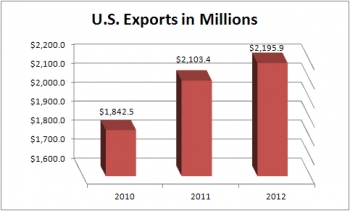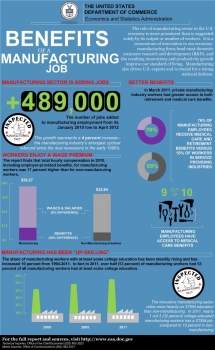U.S. Recognizes Another Year of Export Growth
Guest blog post by Francisco Sánchez, Under Secretary of Commerce for International Trade and Mark Doms, Under Secretary of Commerce for Economic Affairs
Last year was another record-setting year for U.S. exporters.
Data released today shows that in 2012, American exports totaled $2.2 trillion, eclipsing the previous record of $2.1 trillion in exports in 2011.
This represents more than just numbers on a spreadsheet; it’s further proof that “Made in the USA” products are in demand all over the world. It also means that more U.S. businesses are seizing the great opportunities in the global markets, continuing to help pave our nation’s road to economic recovery.
The increase in U.S. exports in both goods and services continues an upward trend that began in 2009. This trend has contributed to the creation of 6.1 million American private-sector jobs during the last 35 months. It is a direct result of President Obama’s National Export Initiative, part of a government strategy to strengthen our economy, support the creation of American jobs, and ensure long-term growth.




